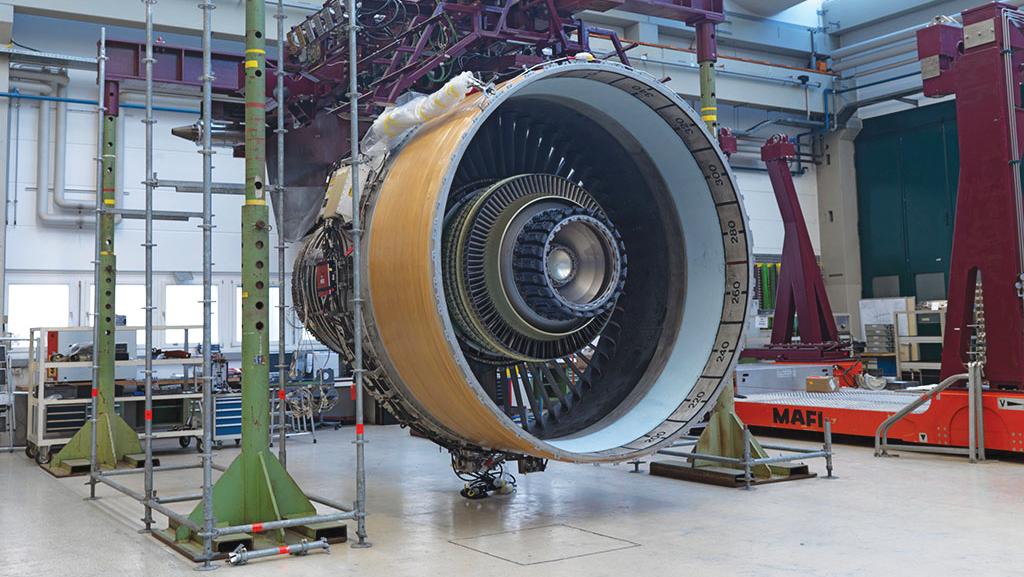
Manufactured by the Engine Alliance joint venture set up by GE Aviation and Pratt & Whitney, the GP7200 was derived from the PW4000 and GE90 families and developed as a rival to Rolls-Royce’s Trent 900 as a powerplant for the Airbus A380 program.
The engine had its first flight in 2006, before entering service two years later with Dubai-based Emirates, the world’s largest A380 operator. The next year, in 2009, Air France took its first GP7200-powered A380 and would eventually grow its fleet to 10 aircraft. In subsequent years, Etihad Airways, Korean Air and Qatar Airways also opted for GP7200-powered A380s. Over its lifespan, the program had two models, the GP7270 and the GP7277, and has held the majority share of the program’s engine market throughout its duration.
In comparison to the stalwart widebody powerplants from which it was derived, the GP7000 engine family is being retired at a relatively young age as airlines move away from four-engine aircraft in favor of twin-engine aircraft. While the A380 program numbered around 15 operators in the mid-2010s, the decision by its manufacturer in 2019 to end production by 2021 has also accelerated the demise of the type.

The COVID-19 pandemic and operators’ preference for twin-engine aircraft such as the Airbus A350, Boeing 777 and 787 have reduced the size of the global A380 fleet. At the height of the pandemic, the majority of in-service A380 aircraft were parked in long-term storage for more than three months. Some were removed permanently from the fleet, either through retirements or being handed back to their lessors. Chief among these was Air France, which operated a fleet of 10 GP7200-powered A380-800s until the summer of 2020 before retiring all of them with immediate effect as the pandemic hit.
More than two years later, Aviation Week’s Commercial Fleet & MRO Forecast estimates around 232 GP7000-family engine units are in service. This contrasts with Trent 900-powered A380s, which number 108 units, according to the Commercial Fleet & MRO Forecast. In 2023 and 2024, more A380s are anticipated to return to service from long-term storage, which will lead to greater numbers of the GP7200 active in the global fleet. Aviation Week data estimates this will rise to 320 GP7000-family engines and 208 Trent 900s next year.
The higher number of A380s returning to service over the next year will inevitably result in a sizable increase in maintenance spending by operators. Approximately $843.7 million is expected to be spent on MRO this year, but in 2023 this will more than double, to $1.9 billion. Approximately $1.5 billion will be spent on GP7200-powered A380s, with an estimated 50% of next year’s MRO spend generated from engine maintenance consisting of shop-visit work. Next year, 138 MRO events are anticipated, representing a peak for the GP7200-powered A380, before drop-offs every year for the rest of the decade. For the 2021-31 period, the compound annual growth rate (CAGR) for MRO for the A380 is expected to see a 9.1% reduction, reflecting the decline of the A380 fleet over the same period, with a CAGR of -15.3%.
With more airlines moving toward twin-engine options, Emirates is set to carry the future of the entire A380 program over the next 10 years as other carriers look to offload their remaining A380s. The airline announced its A380 retirement plan back in 2019 but will fly the aircraft until at least 2035. It began retiring the aircraft in early 2020, starting with a 12-year-old A380 with GP7200 engines. No engine retirements are expected in 2023 and 2024, but these will start in high volumes in 2024, leading to a peak of 72 engine retirements in 2029.

